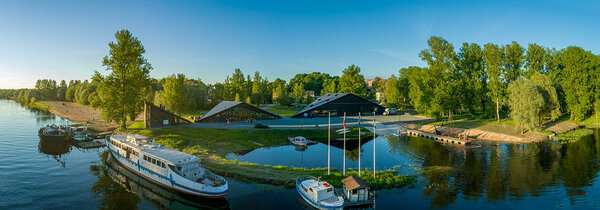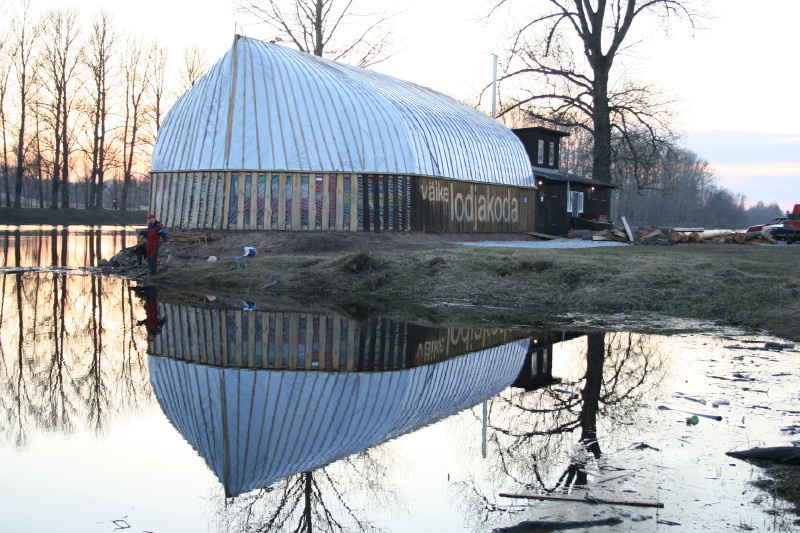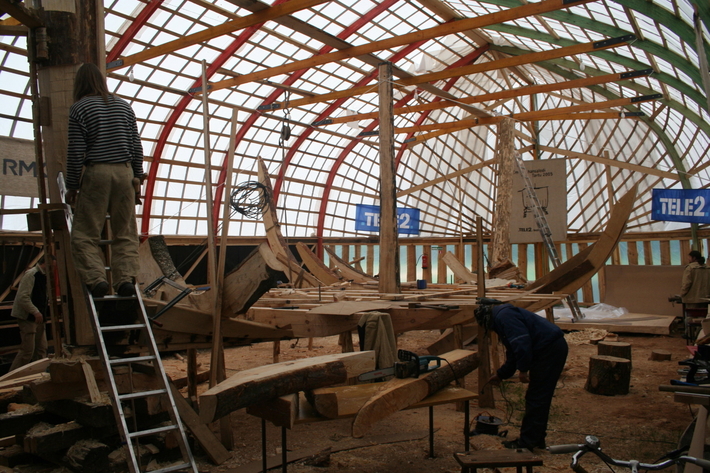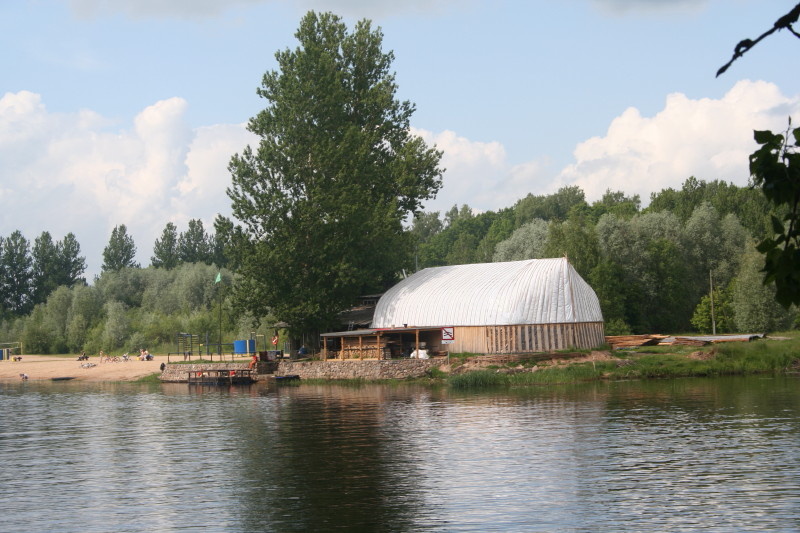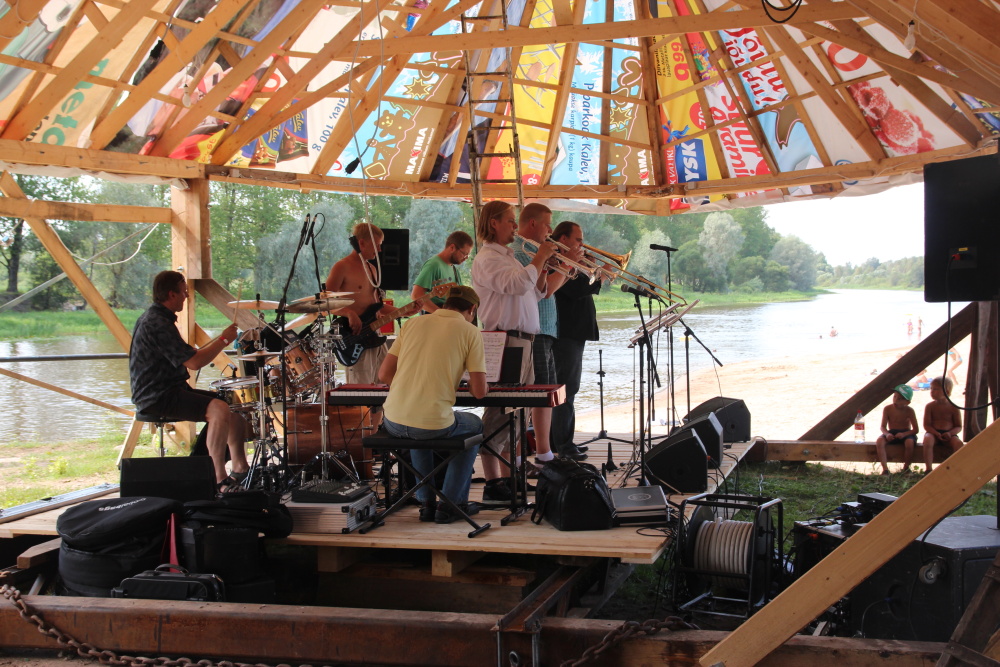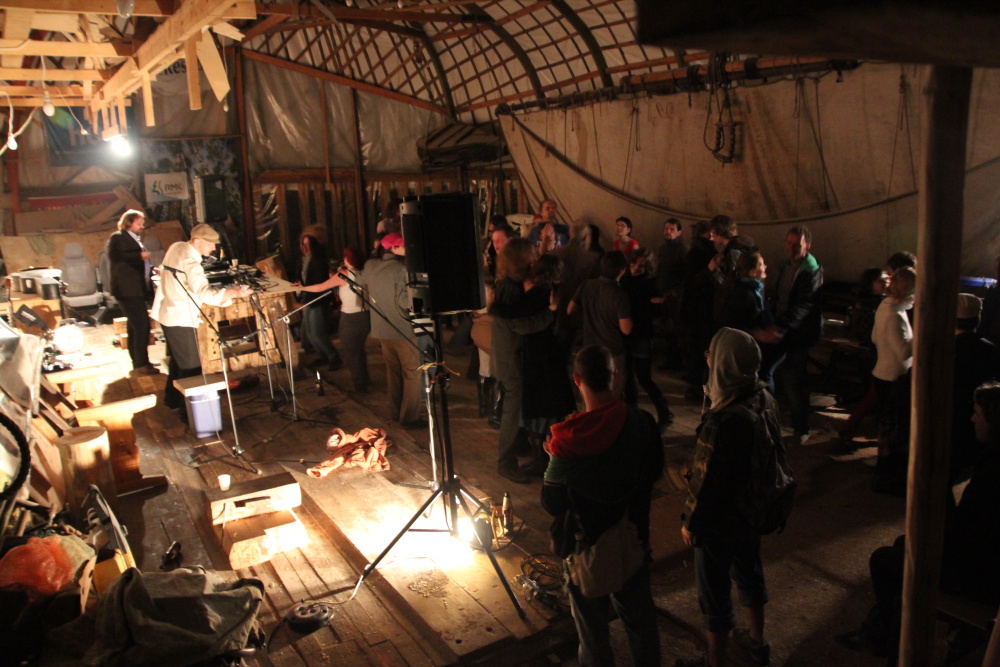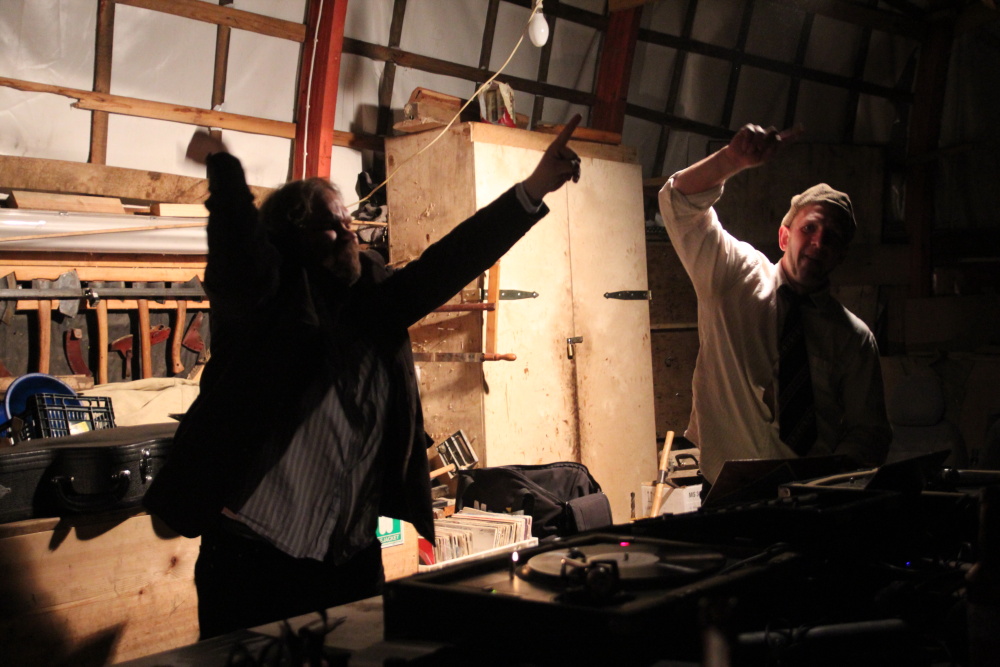Authors
Maarja Kask, Ralf Lõoke, Ragnar Põllukivi, Marja Viltrop (Salto Arhitektuuribüroo)
Constructor
Veiko Seliste, Ehitustrust
Commissioned by
Tartu Linnavalitsus
Area
1500 m2
Design
2016–2019
Completed
2020
The Tartu City Government leased Barge Hall to the Emajõe Barge Society for ten years. The new Bargehall provides greenhouse-like conditions for shipbuilding. For the first 16 years, the Barge Society operated in an actual greenhouse - a laminated wood structure covered with PVC fabric, known as the Barge-Tent, which the society built in 2004 for the construction of Jõmmu.
By developing the theme park at Bargehall, organising events, and renting out rooms, the Barge Society generates income to build new ships and cover the maintenance costs of the building. Everyone who buys a ticket to Bargehall, orders programs, or organises their events here contributes to the birth of new ships!
Lodjakoda consists of three buildings:
1. The main building, with the shipbuilding hall in the centre and smaller rooms on the sides with theme park attractions. The adjacent rooms can accommodate up to 100 people for events, and larger groups can fit in the ship hall when there is no shipbuilding in progress or when the ship is sufficiently completed to host events even during the construction phase. If the front wall of the main building is opened, the ship hall becomes an outdoor hall. Large festivals and open-air concerts can take place on the spacious square in front of the building. In winter, ships pulled out from the river can stand here.
2. The Shed Hall with large gates, used for storing shipbuilding materials but also hosting outdoor events.
3. The sauna building, where volunteers helping with shipbuilding or the boat crew can warm up on the spacious sauna bench after sailing on the Emajõgi in stormy weather. The warm, wood-heated sauna at Barge Hall allows one to jump directly into the cooling currents of the Emajõgi. Like the other rooms, the sauna building can be rented for private events. The sauna building also has space for lifeguards, and the beach toilets are located here.
When Ehitustrust was building Lodjakoda, it commissioned the Emajõe Barge Society to construct a 550 m2 block floor since no one else in Estonia was installing such floors. In the past, this type of industrial parquet was widespread - it is durable, healthy for both feet and dropped tools, and looks more friendly than concrete. It was quite enjoyable to saw and lay blocks as a break from shipbuilding, and unexpectedly, it was a significant help in surviving the first wave of the coronavirus.
Next to Lodjakoda, another architectural gem can be found - the renovated city swimming pool, which received the 2022 Annual Prize from the Landscape Architects Association.
OLD BARGE YARD
The first, so-called old Barge Yard was built by the Barge Society with its own resources in 2004 in preparation for barge construction. A simple and inexpensive yet decent-looking and nautical laminated wood structure was designed in-house, and, of course, constructed by the association. The city of Tartu provided the land and the buildings of the old water rescue station for free use for the Barce Society at that time. In the old Barge Yard, the bargeJõmmu, the Viking ship Turm, the Viking boat Emma, and several smaller wooden boats were built. Here, the yawl Kaja was also constructed, which is currently located in Kabli. The association's blacksmith Alar Tamm operates in the Blacksmith workshop, and more information about his work can be found here.
The Barge Centre celebrates Jõmmu's birthday and the beginning of navigation every year on Walpurgis Night. Occasionally, other enjoyable concerts and performances also take place here. Groups embarking on barge voyages from the Barge Hall's harbor can, if desired, take a tour of the Barge Hall before or after the barge journey. The Barge centre is located right next to the beach and the local playground, so those interested can make a beach stop before or after the barge voyage.
The Emajõe Barge Society conducts boat trips on the Emajõgi River, Lake Peipsi, Lake Võrtsjärv, and the Small Emajõgi, covering the regions of Tartu, Põlva, Jõgeva, Ida-Viru, Valga, and Viljandi counties. During major events, voyages have also been made to Tallinn, Pärnu, Narva, St. Petersburg, Novgorod, Ventspils, Stockholm, and even Paris.
The traveling Barge centre's workshops have taken place in all counties and have represented Estonia in many European countries.

